Tag: Training Tips
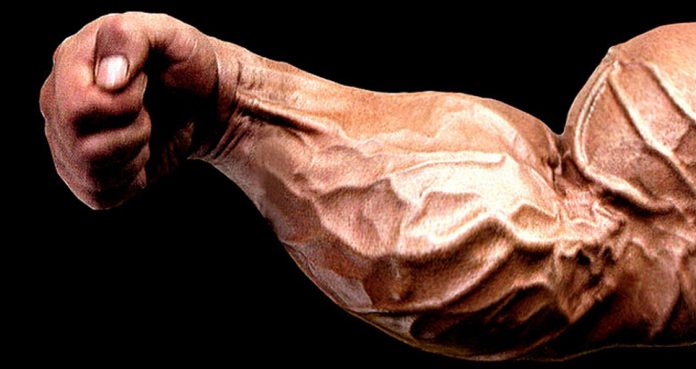
Build Massive Forearms with this Workout
Workout for Building Big Forearms
Forearms are right beside the biceps but don’t get nearly the same love as the big guns. Most people do a couple of wrists curls to train their forearms in every few weeks. The overlooking of training the forearms is a big reason many people have skinny forearms.
Muscular forearms are a symbol of strength and can add functionality by improving your grip strength. Not to mention, chiseled forearms can add to the symmetry and aesthetics of the physique.
Behind the Back Wrist Curls – 3 Sets 15-12-10 Reps
Since your forearms are a small muscles group, they will take relatively less time to recover from a working set as compared to your bis or tris. You should be able to complete your forearm workouts in 25-30 minutes.
Grab the barbell behind your back with an underhand grip. Maintain a full range of motion and curl up the barbell using your wrists. Let the barbell roll out to your fingertips at the bottom of the movement. Doing so will recruit all the muscle fibers in your forearms.
Superset
– Reverse Grip Wrist Curls – 3 Sets 10 Reps
– Wrist Curls – 3 Sets 10 Reps
The reverse grip wrist curls train the top of the forearms while the underhand grip wrist curls train the bottom of the forearm. Use a monkey grip while performing the reverse wrist curls to recruit higher muscle fibers.
Most people make the mistake of lifting too heavy weights in the wrist curls. Leave your ego out of the exercise and use weights you can lift with a full range of motion. You can perform both the superset exercise with your forearms placed on a flat bench or on your quads. Use the wrist curl machine if you have access to it at your gym.
Farmer’s Walk – 3 Sets Failure
You can do the farmer’s walk using dumbbells or a trap bar. In the farmer’s carry, you need to lift a couple of heavy dumbbells and walk around until you can’t hold onto the weights anymore.
The farmer’s carry is a great exercise to develop muscle mass and strength in your forearms. You can also perform the dumbbell or barbell holds to train your forearms. In these exercises, all you have to do is hold onto the bar for the longest time possible.
Wrist Roller – 3 Sets Failure
The wrist rollers look easier than they are. Maintaining a strict form throughout the exercise is an important factor in targeting your forearms. Extend your arms straight forward so they’re parallel to the floor while holding the wrist roller with both your hands.
Roll the weight plate up by rolling the bar towards yourself. While rolling down make sure you don’t let the weight drop by itself. Use a slow and controlled movement to lower the weight. Don’t let your arms lower down while performing the exercise.
Use Oversized Grips
One great way of targeting your forearms in every biceps exercise is to use oversized grips. Using oversized grips make it harder for you to hold onto the barbell or dumbbell and recruits your forearms into action.
If you don’t have oversized grips at your gym, you can wrap around towels around the bars to thicken the grip. If you have weak forearms, you can train them before you start your bi and tri workout as it will recruit your forearms in the arm exercises.
How often do you train your forearms? Let us know in the comments below. Also, be sure to follow Generation Iron on Facebook and Twitter.
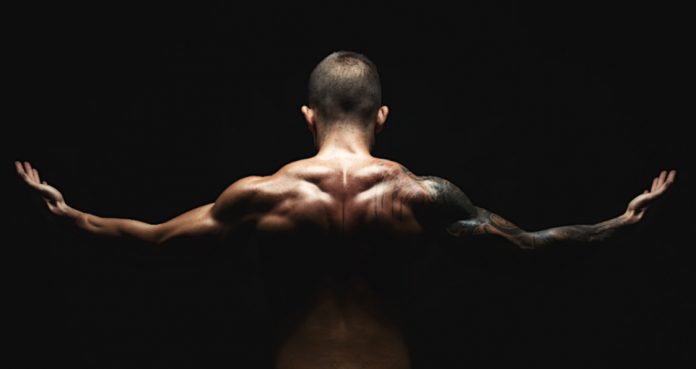
Next Level Mental Training: Integrating Mindfulness Into Your Bodybuilding Routine For More Gains
Integrating Mindfulness Into Your Bodybuilding Routine
Mindfulness often seems like a practice best utilized by busy mothers and wannabe yoga instructors. Those who are serious about a real fitness regimen or bodybuilding may dismiss mindfulness practices as unnecessary or silly.
In reality, mindfulness can actually help you improve your game as you seek to build muscle and reach peak physical fitness. Integrating mindfulness practices into your workout routine can offer a variety of potential benefits that can not only help your overall health but may help you reach your fitness or bodybuilding goals as well.
Visualization Can Help You Reach Goals
Even Arnold Schwarzenegger has written about how visualization helped him focus on his goals as a bodybuilder. Mindfulness practice often involves focusing on yourself, including your mind and your body, in any given moment. Being aware of how you feel and why is valuable, so using tools that increase self-awareness can help. So is the ability to focus your mind on a single idea, such as your bodybuilding goal.
Visualization techniques that you learn as part of mindfulness can help you manifest your goals as a fitness enthusiast or bodybuilder. Basically, by focusing your mental energy on your desired outcome, you reinforce your motivation for your workout routine and direct your personal energy toward making that goal a reality.
Staying in the Moment Can Help You Avoid Injury
Bodybuilding and intense fitness practices carry a serious risk of injury. Overexertion is a common issue for those attempting to push their bodies to the limit. Mindfulness encourages you to pay attention to the information your body provides you. Instead of pushing down pain and other reactions, mindfulness encourages you to explore it and understand your physical responses and limitations.
In other words, practicing mindfulness can help you while exercising by encouraging you to understand your bodily reactions and honor your limits. Pushing yourself too hard and too fast could result in a serious injury that leaves you unable to continue exercising for some time, meaning you will lose some of the progress you have made. Using mindfulness to prevent an injury can help you stay on track to meeting your goals.
Mindfulness and Yoga Complement Other Fitness Regimens
Flexibility is one of the key indicators of health. All too often, those attempting to decrease body fat and increase lean muscle mass will overlook flexibility. Yoga practice, which incorporates mindfulness with physical movements, is a great way to warm up before exercising.
Not only does it stretch you out, but it can help you improve your flexibility in the long run. It can also complement your exercise regimen by getting you into a mindful state where you are able to hear what your body. Whatever your long-term fitness goals, the chances are good that mindfulness and yoga can help you achieve them. Meditation is another valuable tool to help you take your fitness efforts to the next level.
If you haven’t already incorporated mindfulness into your weight training or exercise regimen, now is the time to start. It offers a lot of benefits that can increase your potential for success in your efforts. Mindfulness also offers long-term health benefits, like stress reduction, making it a good idea for just about anyone to practice.
For more news and updates, follow Generation Iron on Facebook, Twitter, and Instagram.
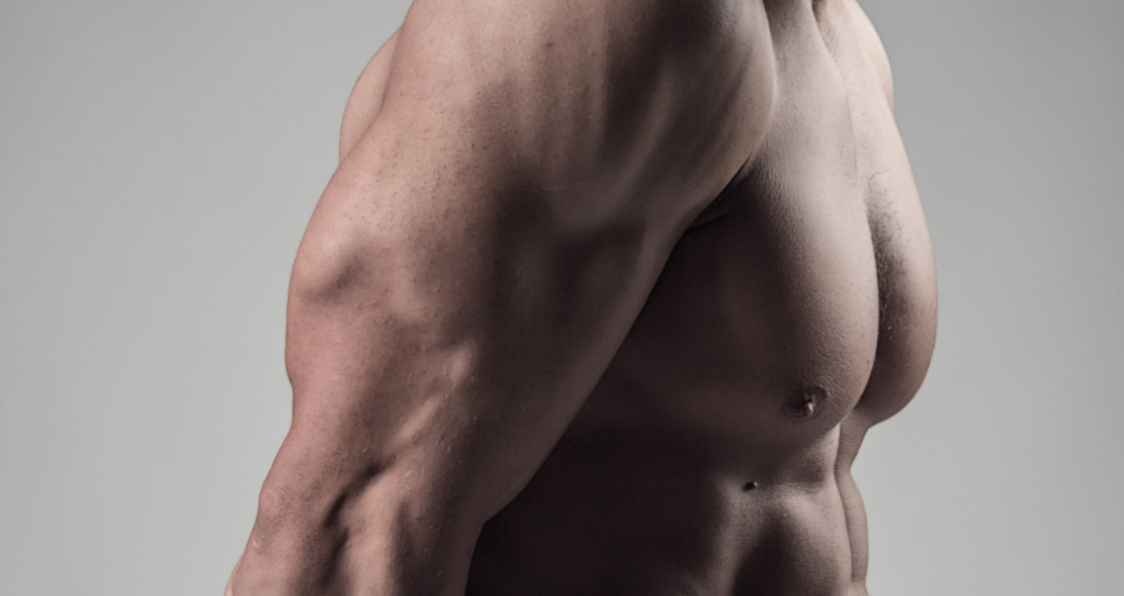
How To Perform the Perfect Skull Crusher To Build Impressive Triceps
The Ultimate Exercise for Tricep Building
Regardless of whether you are a powerlifter, bodybuilder or sports athlete, you should be performing some form of tricep strengthening exercise in your training program.
Developing the triceps can have a positive impact on both strength, aesthetics and technique. However, despite this, many still fail to perform tricep work regularly enough.
If you are looking to improve your pressing and lockout ability for exercises such as bench, dips, handstands, snatch, and jerk, then there is a great need for strong triceps.
This article will review one of the best tricep strengthening exercises that you should be doing – the tricep skull crusher.
Not only will it breakdown skull crusher technique and explain a number of the benefits associated with the exercise, but it will also provide a selection of variations and alternatives.
Skull Crusher Technique and Muscles Worked
The skull crusher is an isolation exercise that specifically works the triceps. Isolation exercises involve moving through only one joint – in this case, the elbow joint.
Although other tricep-orientated exercises, such as the close grip bench press and dips, effectively work the triceps, there are other muscles that assist in these exercises as movement occurs through multiple joints.
Both single and multi-joint exercises have been found to be effective for building strength and size (1).
The benefit of the single-joint component of the skull crusher forces the triceps to do all the work which means they receive a large training stimulus and consequently adapt greatly.
Along with the triceps, an array of shoulder stabilizing muscles must activate in order to maintain stability in the shoulder joint.
These muscles do not change in length through a concentric or eccentric contraction, they contract isometrically which means the muscles are contracted however do not change in length.
This isometric contraction, primarily of the rear delts and scapular stabilizers, holds the upper arm in place. This then allows for deep elbow flexion and to place the demand on the triceps.
Detailed below you will find a step by step guide that will allow you to perform the perfect skull crusher.
Step 1
Set up a flat bench and grab a barbell using a shoulder-width grip. Lie back on the bench and press the bar up so that it sits directly over the top of the chest. The arms should be fully extended.
Grip width can be adjusted if necessary to find a grip that suits you best. The key point to ensure that the muscles of the upper back and around the shoulder blades can engage to stabilize the shoulder joint.
Step 2
From this position, keeping the upper arms fixed, bend at the elbows so that the barbell drops down towards the head.
As the barbell lowers, ensure that the elbows are tucked in tightly and do not allow them to flare out. Concentrate on squeezing the bar and keep the upper back muscles engaged throughout this phase.
Step 3
Once the barbell is directly above the cranium with the elbows in deep flexion, let the upper arm move backwards slightly.
Doing this will increase the stretch on the triceps while simultaneously maintaining tension on the muscle at the bottom of the movement.
Step 4
From there, pull the upper arms back to their original position and powerfully extend at the elbow to bring the arms out of deep flexion and return to the straight arm starting position.
Be wary of bringing the elbows too far forward during this step as this will reduce tricep isolation and potentially increase the strain placed on the shoulder.
4 Benefits Associated With Skull Crushers
Most athletes and lifters will benefit from performing skull crushers in one way or another. Listed below you will find 4 of greatest benefits associated with the skull crusher.
1) Increasing Tricep Strength
The most evident benefit of all is the fact that the exercise strengthens the tricep muscles. Having strong triceps will be beneficial for all pressing exercises and for improving shoulder stability.
For the powerlifter, having strong triceps is essential during the bench press. Considering that the triceps control elbow extension (2) they are particularly important during the lock-out.
In Olympic Lifting, having strong triceps will facilitate a more efficient catch in the jerk and the snatch and improve overhead stability.
More generally, improving tricep strength will have a positive impact on elbow joint health.
2) More Efficient lockouts
As stated, the triceps are most responsible for locking out the elbow joint. Having a strong lockout will facilitate a better bench, jerk and snatch.
By focusing on building tricep strength and size, most athletes and lifters will improve their lockout and therefore improve their overall performance.
3) Elbow Joint Health
Appropriate strength training can improve the health of many joints throughout the body and has been found to be useful for improving bone and joint conditions (3).
Providing that volume, intensity and technique is in place, the muscles will adapt to become more efficient at dealing with forces and stress.
This will take a lot of the strain of the connective tissues that surround the joints – ligaments, tendons and cartilage.
Therefore, increasing tricep strength can help to reduce the risk of elbow injury – specifically overuse injuries.
4) Increased Tricep Size
For a number of athletes, improving muscle size is a priority. For those looking to increase arm size, it is important to heavily target the triceps.
When building mass in the arms, most individuals focus too heavily on the biceps. In actuality, the main focus should be on tricep development as the triceps take up two-thirds of the upper arm.
Therefore, increasing the size of the triceps will cause the arms to look much bigger and fuller.
Skull Crusher Variations and Alternatives
In this section, you will find 3 variations and 3 alternatives to allow you to best progress or regress your training where appropriate.
Dumbbell Skull Crushers
One of the more simple changes that can be made to the skull crusher is to use dumbbells instead of a barbell or EZ bar.
The movement required is absolutely identical however using dumbbells forces the arms to work individually. This is particularly useful for any lifter who struggles with strength imbalances or stability issues (4).
Another benefit of the dumbbell variation is that it may allow for a greater range of motion and therefore place even more stress on the triceps.
Incline Bench Skull Crushers
As the name suggests, this variation involves setting a bench on a slight incline before performing the skull crusher. Feel free to use barbells or dumbbells for this variation.
The incline will cause a greater tricep stretch and allow you to target the tricep from a different angle. Both of these can facilitate an improvement in tricep strength and size.
Skull Crusher Negatives
Negatives involve focusing on the eccentric (lowering) phase of the movement. This advanced training method has been found to increase muscle damage and boost hypertrophy (5).
To maximize the eccentric phase of the skull crusher, very slowly lower the bar for a period of 3-5 seconds until it is directly over the head.
Consider using a spotter for safety and also to allow you to maximally work the triceps.
Close Grip Bench Press
The first alternative to target the triceps is a bench press variation. Assuming a close grip on the barbell during a bench press will predominantly recruit the triceps and pecs (chest).
In order to maximize tricep activation, look to tuck the elbows in tightly to the ribcage as the barbell is lowered to the chest.
The close grip bench press is not only great for tricep development but it will also facilitate a better lockout and is the perfect bench alternative for those with shoulder issues.
Dips
Full dips performed on bars or rings are a superb mass building exercise for the chest, shoulders, and arms.
For those who are new to dips, bodyweight will more than suffice to start with. For those who are more advanced, look to use additional resistance through the use of a dipping belt.
Remember, when it comes to strength training, you must always aspire to gradually make things more challenging if you want to continually improve in strength and size
Overhead Tricep Extensions
The final alternative is probably the most similar to the skull crusher in terms of movement. This exercise can be completed using barbells, dumbbells or cables.
The benefit of the overhead tricep extension in comparison to the skull crusher is that it may be less taxing on the elbow joint which is specifically important for those with elbow issues.
As the name suggests, the exercise involves holding the load overhead with straight arms. From that position, the elbows flex to drop the weight down before driving back up to the starting position.
Final Word
In comparison to other tricep focused exercises, the skull crusher reigns supreme. Not only will it effectively increase tricep strength and size but it may also facilitate performance with other lifts.
Therefore, the skull crusher, with its many variations and alternatives, should be seriously considered when designing a strength training program.
For more news and updates, follow Generation Iron on Facebook, Twitter, and Instagram.
References:
1-Gentil, Paulo; Soares, Saulo; Bottaro, Martim (2015-6). “Single vs. Multi-Joint Resistance Exercises: Effects on Muscle Strength and Hypertrophy”. Asian Journal of Sports Medicine. 6 (2). doi:10.5812/asjsm.24057. ISSN 2008-000X. PMC 4592763. PMID 26446291.
2-Landin, Dennis; Thompson, Melissa; Jackson, Meghan (2018-4). “Functions of the Triceps Brachii in Humans: A Review”. Journal of Clinical Medicine Research. 10 (4): 290–293. doi:10.14740/jocmr3340w. ISSN 1918-3003. PMC 5827912. PMID 29511416.
3-Westcott, Wayne L. (2012-7). “Resistance training is medicine: effects of strength training on health”. Current Sports Medicine Reports. 11 (4): 209–216. doi:10.1249/JSR.0b013e31825dabb8. ISSN 1537-8918. PMID 22777332.
4-Saeterbakken, Atle H.; van den Tillaar, Roland; Fimland, Marius S. (2011-3). “A comparison of muscle activity and 1-RM strength of three chest-press exercises with different stability requirements”. Journal of Sports Sciences. 29 (5): 533–538. doi:10.1080/02640414.2010.543916. ISSN 1466-447X. PMID 21225489.
5-Vogt, Michael; Hoppeler, Hans H. (June 1, 2014). “Eccentric exercise: mechanisms and effects when used as training regime or training adjunct”. Journal of Applied Physiology (Bethesda, Md.: 1985). 116 (11): 1446–1454. doi:10.1152/japplphysiol.00146.2013. ISSN 1522-1601. PMID 24505103.
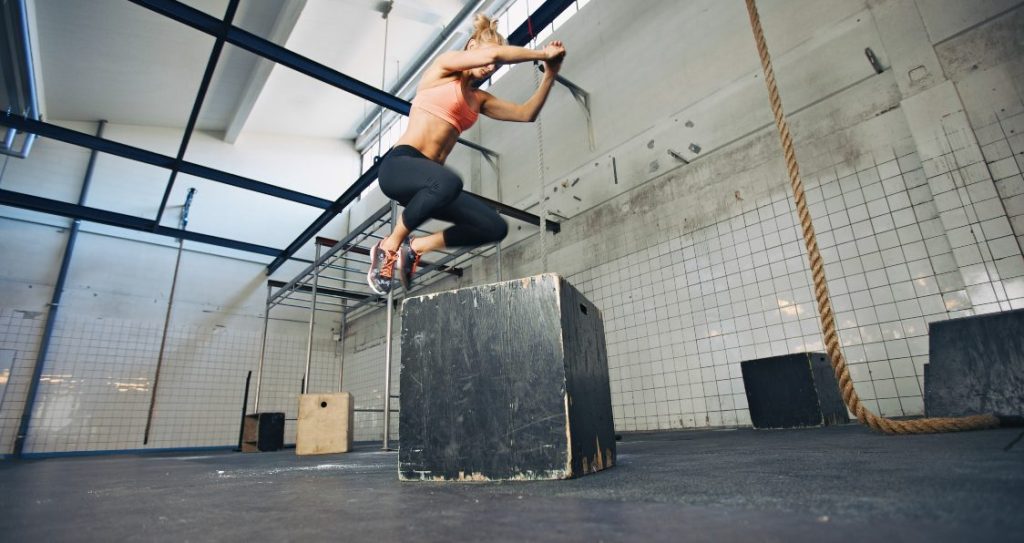
Benefits of Circuit Training: Why You Should Do Them
Incinerate fat with short and intense, but not easy workouts via circuit training. Circuit training is a training method that has been around for hundreds of years. Although its whereabouts came from two British scientists, R.E. Morgan and G.T. Anderson, it’s been around since the 1800s. Decades ago men didn’t have access to dumbbells or barbells, so they would move from exercise to exercise doing bodyweight movements — little did they know they were on to something.
A lot of people would like to know how to burn more calories during their workout. Instead of working out smarter though — meaning less time in the gym — they turn to long steady-state cardio sessions. Instead, try circuit training to put your metabolism into high gear. Below, find out how.
What is Circuit Training?
Circuit training is cycling through different exercises targeting different muscle groups with limited rest. Although you can include some cardio, it’s mainly resistance training. It’s made up of 5-10 different exercises, and you do one exercise at a time until you complete the set of exercises prescribed — this counts as one round. For example, you might go from lunges to inverted rows to dumbbell flyes to ab roller.
It’s made up of multiple rounds and you’ll do one exercise at a time and go through all of them before a round is completed. This is different from supersets, where you’ll work out just two opposing muscle groups at a time for a couple of sets — alternating between each exercise each set.
You can vary the reps, time, rounds, and type of exercise you do with circuit training, but the rest should be minimal. For example, you may go through all the exercises each round as fast as you can and allow yourself a 30-second rest between each round.
Which Muscle Groups Should You Work?
Generally, you’ll be doing a full-body workout with circuit training, although you can limit it to just a couple of muscle groups, depending on the type of split routine you’re on. For example, if you’re on a split routine with a chest and arms day split, then you can create a circuit that works just your chest, triceps, and biceps. You can rotate from cable crossover to skull crushers to preacher curls. This can be a great way to fatigue your muscles at the end of a workout!
Moreover, you can decide to add a quick full-body workout to the end of your workout or decide to dedicate an entire day to just circuit training. The power is in your hands. Circuit training gives you a lot of flexibility.
Calories Burned
You may be wondering how many calories you can burn from circuit training. Well, the good news is that circuit training can allow you to burn more calories per workout, and if combined with interval training, you’ll burn more calories after your workouts (more on that later).
Of course, the exact number of calories you burn depends on numerous factors, including the length of the workout, exercises, and anthropometrics (weight, BMI) of each individual. However, according to Harvard Medical School, a 128-pound individual can burn about 240 calories, a 155-pound person will burn around 298 calories, and a 185-pound person will burn around 355 calories during a 30-minute workout bout. When compared to weightlifting — a 128-pound person will burn about 90 calories, a 155-pound person can burn about 112 calories, and a 185-pound person can burn around 133 calories. So circuit training packs quite the workout if you’re looking to burn more calories!
And that’s not counting the calories you’ll continue to torch throughout the day.
Interval training
While circuit training focuses on working out different muscle groups with a limited amount of rest, interval training focuses on the amount of time you spend on an exercise(s) and the intensity. You’ll alternate periods of moderate-to-high-intensity work with periods of either active or passive rest, aka HIIT (high-intensity interval training). And unlike circuit training, interval training is mainly cardio, although you can combine it with resistance training.
You can do interval training with either one exercise — e.g. burpees — or multiple exercises — e.g. burpees, squat jumps, kettlebell swings.
Interval training is a great combo with circuit training to put your body in a fat-burning state (1).
Circuit Training Workout Example
4 Rounds
Weighted Chin-ups x 8 reps
Dumbbell bench press x 10 reps
Dumbbell lunge x 12 reps
Battle rope x 45 sec.
Resistance band curls x 15 reps
Resistance band twist x 10 reps ea. side
Exercise Post-exercise Oxygen Consumption (EPOC)
Exercise post-exercise oxygen consumption (EPOC), aka the afterburn effect, is the amount of oxygen required to restore your body to homeostasis, which is your body’s normal resting metabolic rate. And it’s the culprit that allows your body to continuously burn calories after your workout. That’s because your body relies on ATP to fuel muscular activity, which is produced via oxygen either through anaerobic or aerobic pathways. If you’re in a steady-state of oxygen consumption — like steady-state cardio — your aerobic pathways provide most of the ATP needed for the workout. However, since circuit training requires ATP from the anaerobic pathways, the EPOC effect is increased, and the higher the intensity of the workout, the more ATP is required from anaerobic pathways.
Simply put, circuit training yields a greater number of calories burned post-workout than other physical activities (2).
Benefits of Circuit Training
Aside from burning more calories during and after your workout, circuit training also has other benefits worth mentioning. For one, since your workout will be short and intense, that means you’ll save time in the gym (3). You can get a great circuit workout in just 15-30 minutes.
In fact, a 2013 study conducted by the Journal of Physiology found that men who exercise at a moderate intensity doing 40-60 minutes of cycling 5 times a week had similar improvements in their body composition than men who did sprint intervals for less than 12 minutes 3 times a week (4).
Combine circuit training with high-intensity interval training and you’ll improve your physique in less time.
Also, circuit training provides you a good mix of physical fitness, including muscular strength, muscular endurance, cardiovascular endurance, and improving your body composition (5).
Another benefit of circuit training is that a lot of people follow the same workout routine day in and day out, which can become dull quickly. Well, with circuit training you can mix up your monotonous regimen and have some fun!
Benefits
Saves time
Increases strength
Increases endurance
Burn more calories
Mixes up your workout
Recap
Circuit training is a workout style with minimum rest that mixes up multiple exercises that work different body parts. It can be a quick workout and increase your strength and endurance simultaneously. Plus, it catapults your body into a fat-torching state long after your workout.
Do you enjoy circuit training? Let us know and follow us on Instagram, Facebook, and Twitter.
References
1 – Wingfield, H. L., Smith-Ryan, A. E., Melvin, M. N., Roelofs, E. J., Trexler, E. T., Hackney, A. C., Weaver, M. A., & Ryan, E. D. (2015). The acute effect of exercise modality and nutrition manipulations on post-exercise resting energy expenditure and respiratory exchange ratio in women: a randomized trial. Sports medicine – open, 1(1), 11. https://doi.org/10.1186/s40798-015-0010-3
2 – Jung, W. S., Hwang, H., Kim, J., Park, H. Y., & Lim, K. (2019). Effect of interval exercise versus continuous exercise on excess post-exercise oxygen consumption during energy-homogenized exercise on a cycle ergometer. Journal of exercise nutrition & biochemistry, 23(2), 45–50. https://doi.org/10.20463/jenb.2019.0016
3 – Gillen, J. B., & Gibala, M. J. (2014). Is high-intensity interval training a time-efficient exercise strategy to improve health and fitness?. Applied physiology, nutrition, and metabolism = Physiologie appliquee, nutrition et metabolisme, 39(3), 409–412. https://doi.org/10.1139/apnm-2013-0187
4 – Cocks, M., Shaw, C. S., Shepherd, S. O., Fisher, J. P., Ranasinghe, A. M., Barker, T. A., Tipton, K. D., & Wagenmakers, A. J. (2013). Sprint interval and endurance training are equally effective in increasing muscle microvascular density and eNOS content in sedentary males. The Journal of physiology, 591(3), 641–656. https://doi.org/10.1113/jphysiol.2012.239566
5 – Romero-Arenas, S., Martínez-Pascual, M., & Alcaraz, P. E. (2013). Impact of resistance circuit training on neuromuscular, cardiorespiratory and body composition adaptations in the elderly. Aging and disease, 4(5), 256–263. https://doi.org/10.14336/AD.2013.0400256
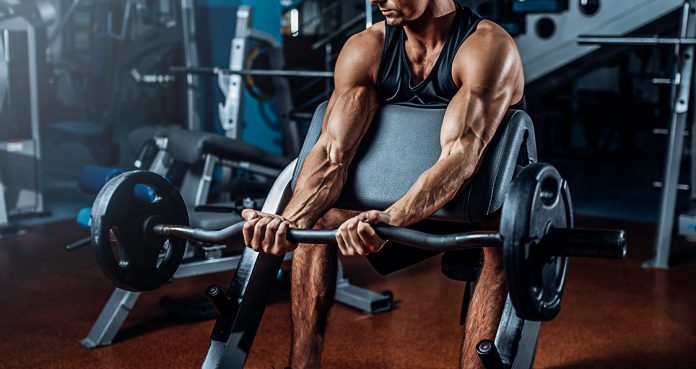
10 Exercises To Add Variety In Your Next Workout
Try these Exercises in Your Next Workout
Just like us humans, no two exercises are created equal. Most people stick to the same exercises in their workouts. Performing the same routines over and over can lead you to hit a plateau.
There are a few incredibly effective exercises which can target your muscles in a unique way. The exercises in this article will help you break the plateau and will take your gains to the next level.
Chest
Floor Dumbbell Chest Flyes
[embedded content]
Most people make the mistake of not following the full range of motion while performing the bench dumbbell flyes. The floor dumbbell flyes force you to touch the floor with your elbows at the bottom of the movement and touch the dumbbells at the top of the movement.
Incline Pin Press
[embedded content]
The upper pecs are a weak muscle group for most people. Incline pin presses are a great way to overload your upper pecs. Incline pin presses also add a layer of safety to the compound exercise.
Back
T-Bar Rows
T-Bar rows are one of the most underutilized exercises when it comes to building a thick back. The T-Bar rows were one of Arnold’s staples and they should also be a part of your exercise arsenal.
Bent Over Lat Pull-Down using Seated Cable Row
The problem with the normal lat pull-down is, you can use momentum to bring the weights down. Bent over lat pull-downs on the seated cable row will eliminate the use of momentum and you will have to use your lats to pull the weights.
Shoulders
Reverse Seated Alternate Hammer Strength Press
The normal shoulder presses focus on the anterior delts, while the reverse seated alternate hammer strength presses focus on the medial deltoids. The hammer strength presses will help you in building the separation and roundness of your shoulder caps.
Biceps
Arm Blaster Barbell Curls
[embedded content]
For most guys arms are their favorite muscle group to train. Most guys let their ego get in the way of building a nice pair of guns. The arm blaster helps in isolating your pythons and will help in building the size, conditioning, and the bicep peak.
30’s
[embedded content]
30’s will completely annihilate your biceps. In this exercise, you need to perform 10 reps of barbell curls on the bottom half, 10 reps on the top half and 10 full reps. 30’s are an extension of 21’s and are way harder.
Triceps
Cable One Arm Triceps Extensions
[embedded content]
Most people go too heavy on the cable triceps extensions and lean onto the bar. Stand straight next to the cable pulley machine and maintain a full range of motion. Hold and squeeze your triceps at the bottom of the movement.
Legs
Platz Hack Squats into Sissy Squats
[embedded content]
Tom Platz arguably had the sickest legs in the bodybuilding industry. One of his not-so-secrets were the Platz hack squat into sissy squats. This exercise targets your quads and will help you in building that tear-drop.
Good Mornings
[embedded content]
It is harder to develop your hamstrings as compared to your quads as you can’t see your hamstrings in the mirror and it is harder to develop a mind-muscle connection with them. Maintain a slight bend in your knees, push your hips back as you bend to lower the barbell. Imagine using your hams to lower the weights as compared to your back. Doing this will help you get a better pump.
Which is your favorite exercise? Let us know in the comments below. Also, be sure to follow Generation Iron on Facebook and Twitter.
*Header image courtesy of Envato Elements.
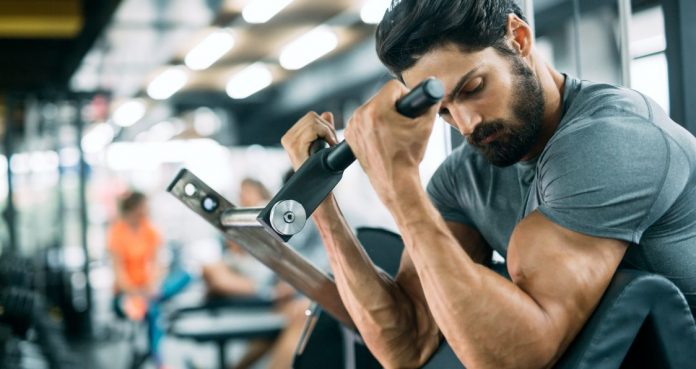
The Machine-Only Bicep Workout For Building Huge Biceps
This Machine-Only Bicep Workout Will Give You Intergalactic Gains
Big biceps have been the symbol of machoism and badassery for ages. Getting girls and building big biceps are two of the most common reasons why people get a gym membership. If building your guns was easy, everyone would be walking around with mountain like biceps.
Most people make the mistake of overly depending on dumbbell and barbells for building their pythons. Following the same workout routine can make you hit a plateau. You need to constantly shock your muscles to make them grow.
1. Cable Curls – 3 Sets 20 Reps
Cable curls are a great exercise for pre-exhausting your guns at the beginning of your workouts. Performing cable curls on a straight bar help with building overall size in your biceps. Cable curls are a substitute for the barbell curls.
Using cables helps you maintain a constant tension on your muscles throughout the exercise. While using the free weights, you have tension on your target muscle on the concentric movement but have no stress on the eccentric movement.
2. Cable Preacher Curls – 3 Sets 12 Reps
You haven’t experienced true isolation until you perform the cable preacher curls. Use the preacher curl machine if you have an access to it at your gym. Otherwise, set up the preacher curl bench on the cable machine.
Set the cable pulley and the bench so the weights don’t rack at the bottom of the movement. This will help in maintaining a constant tension on your biceps. Hold the straight bar at shoulder width and squeeze your biceps at the top of the movement.
3. Cable Rope Curls – 3 Sets 12 Reps
Cable rope curls are a substitute for the hammer curls. In hammer curls, you hold a dumbbell in each hand and your palms face each other. Hammer curls are incredibly effective at building the length of your biceps.
While performing the cable rope curls, make sure your elbows are locked in a position and you contract your biceps at the top of the movement. Keep the reps slow and deliberate to get the most out of this exercise.
4. Overhand Bicep Curls – 3 Sets 15-12-12 Reps
Most people neglect training their forearms. Not training your forearms can cause an imbalance between your biceps and forearms. Your workouts should be designed so they help you build muscle symmetry.
Use a straight bar for this exercise. Place your thumbs over the straight bar while performing this exercise. Doing this will force your forearms to recruit more muscle fibers to hold onto the bar.
5. High Cable Curls – 3 Sets 15 Reps
High cable curls are arguably one of the best bicep finishers. This exercise will help you in building a peak in your biceps. Most people let their egos get the better of them while doing this exercise. They put on more weights than they can handle.
Stand in the center of the cable pulley machine and hold a D-handle in each hand. Make sure your elbows stay fixed while you perform the curls. Pause for a second at the top of the movement and contract your muscles for optimal results.
Which is your favorite bicep exercise? Let us know in the comments below. Also, be sure to follow Generation Iron on Facebook and Twitter.
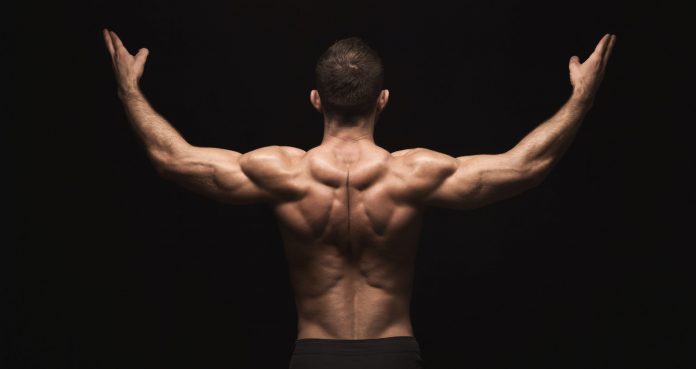
10 Really Effective Mass-Building Back Exercises
Build a road map back with a variety of mass growth-inducing back exercises!
The back consists of several muscle groups which make up the upper posterior chain (Backside of the body) and these include the Latissimus Dorsi, Trapezius, Rhomboids, Infraspinatus, and Erector Spinae. (1, 2)
These muscles help us to twist, bend, stand upright, lift heavy objects, and protect the spine. And without a strong back; we can’t deadlift, squat, or even perform functional activities at optimal levels. (3)
They also play a big role in your posterior appearance giving width and thickness to your rear torso which is highly desired by many people who train for aesthetics and mass.
But, the more muscles per surface area means you must train them each individually to ensure maximum muscle-building and strength benefits. But, there are so many different exercises and ways to get an effective back workout.
So… we chose 10 exercises which we felt would give you the best results in your back training endeavors…
1. Barbell Bent-Over Row
The barbell row is without a doubt, one of; if not the most effective back exercises we have available to us.
In fact, ACE-sponsored research tested the effectiveness of several back exercises by having 19 males perform them with all variables being equal, and the bent-over row showed significant muscle activation in essentially all back muscles. (4)
The row was significantly more effective for targeting the erector spinae than other rowing exercises, as well as pull-ups/chin-ups, and pulldowns.
But it was a close second in muscle activation for lower traps, lats, and Infraspinatus muscles. This information leaves us to conclude that the bent-over row is the perfect overall exercise which stimulates the back symmetrically according to research. (5)
So, we’d say it’s a pretty impressive movement and should be a staple for compound movements when aiming for the most development possible.
Barbell bent-over row training tips:
Practice proper form before training heavy. Your knees should be bent with your back straight to avoid injury.
When you row, pull the barbell to the bottom of your rib cage which will allow you to utilize your maximum strength potential.
The bent-over row is best utilized as the first and heaviest lift in your workout.
2. Barbell Deadlift
A list of effective back exercises would not be complete without the king of posterior chain exercises… the barbell deadlift.
Now, the deadlift has so many variations, but we included the conventional version to keep things simple. The deadlift isn’t just a back exercise though. It’s actually an entire posterior chain (Backside of the body) exercise.
Which means it works all rear muscles from your calves, all the way up to your traps.
But what makes the deadlift such a special exercise is that you can maximally load the barbell and lift as much weight as your body you can handle. No other exercise works as many muscles groups as the deadlift.
Barbell deadlift training tips:
Practice proper form with light weights if you’re a beginner because the deadlift is a compound exercise which can cause injury if done improperly.
You should keep the bar as close to your body as possible and drive through your hips to the top.
Your lower back should be arched and your upper back should be just slightly rounded for the most effective pull.
3. Pull-Up
Any form of a pull-up will yield excellent results. But this exercise really shines is its superior activation of the Latissimus Dorsi (Lats) and research confirms this.
In a study, the pull-up showed significant lat activation compared to various forms of rows, and even the lat pull-down. (4)
Now, the pull-up is a simple exercise but that doesn’t mean it’s an easy one. You do need upper body strength but there are workarounds which is good news.
Most gyms often have pull-up assist machines which are fantastic and then there’s the cable pulldown which works the same muscles but to a lesser extent overall.
Pull-up training tips:
Use a full range of motion when doing the pull-up to maximize muscle fiber recruitment and strength.
If you’re a beginner, don’t worry about pulling yourself up all the way. You can also use a pull-up assist machine to develop your strength before you progress into the body weight only variation. Or do negatives by using something/someone to help you to the top of the bar and slowly lower yourself down.
Use a weighted belt or dumbbell between your ankles for added resistance.
4. Underhand Yates Row
Named after the former 6-time Mr. Olympia Dorian Yates, this row variation offers a different stimulus than the conventional barbell row.
Now, instead of using a pronated (Overhand) grip, you’ll use a supinated (Underhand) grip. This allows you to really stimulate the lower back muscles and the difference is noticeable during the movement when compared to an overhead row.
Using either a free weight barbell or Smith machine will yield similar results. But the free weight barbell will develop more stabilizer muscles.
Underhand Yates Row training tips:
When you do the underhand row, you want to pull the barbell to your mid stomach area. This engages more of the lower back.
Using a Smith machine is also a great way to do this exercise because you don’t have to stabilize the weight. You can just focus on the movement itself and training for the best contraction possible.
5. Sumo Deadlift
The Sumo deadlift (SD) is rising in popularity because it’s actually a safer alternative to the conventional barbell deadlift.
But how could it be so different?
Sumo deadlifts alleviate spine stress since the lift is closer to your center of mass, unlike with the conventional deadlift where you have to bend over and reach out to grip the barbell to lift it. With the SD, your back and the rest of your body can remain in a more upright position. (6)
But your stance should be very wide with your feet pointed slightly outward. This will allow you to lift heavy with a shorter range of motion, to maintain maximum balance, and to keep your torso upright.
Sumo deadlift training tips:
Take a wide stance with feet pointed just slightly outward. Your torso should be erect, and you should not have to place your arms too much out in front of your body.
You can use an overhand grip or an overhand/underhand grip.
Drive through your legs first and thrust your hips forward while your spinal erectors assist in completing each rep.
The Sumo lift can replace the conventional deadlift and taller people find it to work better for them.
6. V-Bar Pulldown
Why use a V-bar, or close bar? Well, the most obvious reason is that you can absolutely use more weight than if you were to use a long, bar attachment. This is ideal for muscular hypertrophy and will really hit all the back muscles sufficiently.
Now, a study showed narrow grip pull-downs to have similar electromyographic (EMG) activity to a medium or wide grip hand position, even if the medium grip has a slight advantage. (7)
But, the benefit of using more resistance is one reason why we chose the V-bar variation for an effective back exercise.
V-bar pulldown training tips:
Warm up with a light weight for 2 sets of 12-15 reps before progressing to heavier weights.
You should keep your elbows tucked in during the exercise and really focus on contracting and engaging the back muscles.
Do not lock out your arms during the concentric (Positive) phase of the exercise as this can place a lot of stress on the biceps and cause injury.
This variation is great as a compound lift or a finisher.
7. Seated Cable Row
Rowing is a phenomenal way to stimulate your back and it best targets the middle Trapezius muscles, the lats, and even the erector spinae according to a study. (4)
This benefits an individual by improving posture and promoting thoracic extension which helps to keep a straight and healthy spine. (8)
But the row is also a great exercise for burning lots of calories and building muscle at the same time since it’s a functional sporting movement.
Seated cable row training tips:
Use any cable attachment handle which allows you to comfortably and effectively perform the seated cable row.
Perform high reps to utilize the functional movement of the row.
Avoid using momentum and keep your elbows slightly bent to effectively engage the back muscles.
The seated row is a great exercise to begin your back workout with or use it as a burnout finisher.
8. Inverted Row
Also known as the Australian pull-up, the inverted row is a less difficult version of a conventional pull-up but it’s also like a bodyweight row.
Now, this exercise has shown to effectively target the middle Trapezius muscles and the Infraspinatus (Rotator cuff muscle which stabilizes the shoulder joint). (4)
And all you need is a Smith machine to perform this exercise. But, it’s a great movement which is sadly underrated due to being unconventional and overshadowed by other exercises.
Now, the inverted row really shines for lessening spine load stress and motion. But when utilizing this exercise, keep in mind that it targets the upper back significantly more than the lower back. This is ideal for isolation purposes. (9)
Inverted row training tips:
Position your body beneath a Smith machine bar so that you can grab it at a slightly wider than shoulder-width grip. Then, you’ll pull your body up to the bar just as you would a pull-up while retracting your shoulder blades.
The inverted row is just a reverse of the standard barbell row so it’s also a great functional exercise. You can use it as the first exercise in your back workout or save it for last to really burn out.
9. I-Y-T Raise
You may or may not have heard of the I-Y-T raise but when it comes to back training exercises, it’s one of the best.
A study showed the I-Y-T raise to significantly stimulate the Trapezius, and Infraspinatus muscles when compared to several row variations, and pull-ups. (4)
Now, you can do this exercise on an incline bench, sitting upright on a bench, or whichever way you feel the target muscles being worked the best.
The exercise motion looks exactly how it sounds. You’ll make an I, Y, and T with your arms to hit each muscle group.
I-Y-T raise training tips:
Lift your arms straight up above your head to form an “I”. Then, you’ll bring your arms back down and form a “y”. Lastly, you’ll bring your arms down and then form a “T”.
The goal is to feel the muscles working by contracting and squeezing during each repetition.
10. Rack Pull
The rack pull is a real powerhouse back exercise because you take a lot of your legs out of the movement which activates more of the spinal erectors.
This is very beneficial for back development and you can train heavy safely; which is another great reason to include this exercise in your workout routine.
Now, unlike the conventional barbell deadlift, you’ll start with the bar raised off the ground on a rack at about knee level. Your legs will help to lift the barbell through about a third of the movement while the spinal erectors and hips extend to complete the lift.
Rack pull training tips:
Use a Smith machine if don’t have great balance/stability. However, if you want to build stabilizer muscles then using a free weight barbell is a better option. But, both are great and will yield muscle and strength gains.
Set up the barbell slightly at, or above knee level on a rack so your back will have to engage to pull the weight. But you’ll extend and drive through your hips and knees while pulling the weight.
Wrap Up
Having a strong back is vital for aiding in that shredded and massive physique while also providing for better balance and support. These back exercises are great for mass-building and giving you that size you want most. Be sure to check them out and add these to your workout routine. You won’t be disappointed by the results.
For more news and updates, follow Generation Iron on Facebook, Twitter, and Instagram.
*Header image courtesy of Envato Elements
References:
Henson, Brandi; Edens, Mary Ann (2019), Anatomy, Back, Muscles, StatPearls, StatPearls Publishing, PMID 30725759, retrieved 2019-05-01
Chapter 40: Muscles, vessels, nerves and joints of the back. www.dartmouth.edu. Retrieved 2019-05-01.
Back Muscles. Cedars-Sinai. Retrieved 2019-05-01.
ACE – Certified™: April 2018 – ACE-SPONSORED RESEARCH: What Is the Best Back Exercise?. www.acefitness.org. Retrieved 2019-05-01.
Fenwick, Chad M. J.; Brown, Stephen H. M.; McGill, Stuart M. (2009-3). Comparison of different rowing exercises: trunk muscle activation and lumbar spine motion, load, and stiffness. Journal of Strength and Conditioning Research. 23 (2): 350–358. doi:10.1519/JSC.0b013e3181942019. ISSN 1533-4287. PMID 19197209.
Biomechanics of Safe Lifting. ergo.human.cornell.edu. Retrieved 2019-05-01.
Andersen, Vidar; Fimland, Marius S.; Wiik, Espen; Skoglund, Anders; Saeterbakken, Atle H. (2014-4). Effects of grip width on muscle strength and activation in the lat pull-down. Journal of Strength and Conditioning Research. 28 (4): 1135–1142. doi:10.1097/JSC.0000000000000232. ISSN 1533-4287. PMID 24662157
Video: Seated row with weight machine. Mayo Clinic. Retrieved 2019-05-01.
CHAD M. J. FENWICK, STEPHEN H. M. BROWN, AND STUART M. MCGILL
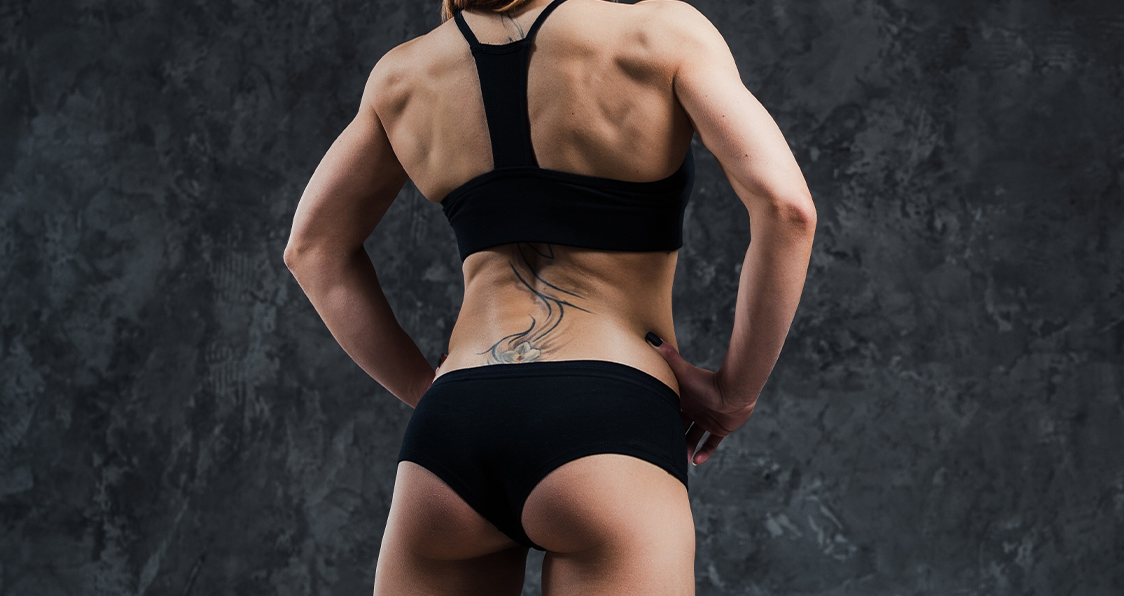
The Cure For The Flat Butt
Reasons for a Flat Butt and How to Fix It
Ladies, if you’re struggling with the “flat butt syndrome”, this is the article you need to read. A firm and round butt is aesthetically appealing and is within your reach if you’re willing to work for it.
A pear-shaped rear doesn’t only make you stand out, it makes you fitter and healthier. The glutes are composed of three separate but synergetic muscles which make them one of the strongest muscle groups in the body.
The three muscles are primarily the hip extensors. They aid in the external hip rotation, abduction, and even in stabilizing the entire posterior chain when working properly. The gluteus maximus is the strongest and thickest muscle in the body which is capable of burning a surplus of calories when trained efficiently.
Sitting For Too Long
While desk jobs obviously don’t burn a lot of calories, they’re also the reason for flat butts. Prolonged sitting and a lack of physical activity are big factors for causing the anterior pelvic tilts.
Too Much Cardio
For most women, hitting the gym is equivalent to working out on the cardio equipment. Doing too much cardio leads to muscle and fat loss. The excess of cardiovascular training can cause a loss of gluteal muscle mass.
Resisting Resistance Training
Look around in a gym and you’ll hardly find women in the free weights section. It’s a widespread myth that lifting weights will make the girls look masculine. On the contrary, resistance training can help tone and tighten the muscles for women. Women don’t generate enough testosterone naturally to be able to build muscle like men.
Fix for the Flat Butt
Training with weights is arguably the best way to get your glutes in shape. A glute focused workout will help you build the gluteal muscle mass even if you have strong quads which otherwise take over your leg workouts.
Hip Thrusts – 3 Sets 15 Reps
The hip thrusts are a great way to work on your glutes and hamstrings. Make sure you maintain a neutral spine and pause at the top of the movement. With this workout, the goal is to target your glutes and not your entire lower body.
Butt Blaster Machine – 3 Sets 15-12-10 Reps
Butt blaster machine is an isolation exercise and will set your rear on fire. Feeling and contracting the glutes is the key to a successful butt workout. If you don’t have access to a butt blaster machine at your gym, perform the donkey kickback on a leg extension machine.
Cable Pull-Through – 3 Sets 15-12-10 Reps
Locking out and squeezing your glutes at the top of the movement during the cable pull-throughs will recruit all the three major muscles in your rear. With the glutes workouts, your goal is not to hit PRs or move big weights but to completely annihilate your muscles.
GHD – 3 Sets 15 Reps
Glute Ham hyperextensions (GHD) are great posterior chain builders. Maintain a full range of motion while performing this exercise and hyperextend your back to hit your glutes effectively.
Smith Machine Squats – 3 Sets 15-12-10 Reps
Barbell squats are a compound exercise and for some people, might work their quads and hams more than their glutes. Performing the squats on the smith machine with your feet placed together and in front of you can put more focus on your butt.
Are you suffering from the pancake ass syndrome? Let us know in the comments below. Also, be sure to follow Generation Iron on Facebook and Twitter.
*Header image courtesy of Envato Elements.
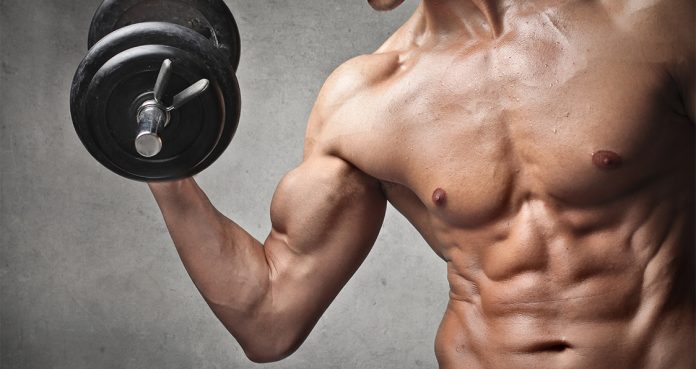
5 Ways To Integrate Powerlifting And Bodybuilding
5 Ways To Integrate Powerlifting And Bodybuilding.
The longstanding relationship between bodybuilding and powerlifting has generally been that of a healthy rivalry. But sometimes oppositional thinking can blind one camp to the benefits of the other.
Recently, powerlifting has become increasingly fashionable in the fitness community, and new athletes are rising who are skilled in both powerlifting and aesthetic training, among them are names like Stan Efferding, and Susan Salazar. The following are some of tips for incorporating powerlifting and bodybuilding.
1. Heavy weights, higher reps
Powerlifters prioritize neurological training, but hypertrophy work (6-15 reps) builds a foundation of actual muscle for that training, which is often neglected by powerlifters. Often the weakest link for powerlifter is not their ability to recruit muscular force, it’s the amount of muscle available for recruitment. Bodybuilders often forget that hard, dense muscle and serious thickness is built with heavy weight. He compares Ronnie Coleman and Phil Heath: one preferred lifting very heavy and the other didn’t. The difference is clear.
2. Exchange Movements
To the powerlifters, it’s important to to balance the body. A more complete muscular system will minimize injury, increase strength and mobility, and allow the body to optimally recruit firing patterns.
To the bodybuilders, include some compound movements. Low bar squats are one of the best hamstring and glute builders out there. Paused bench press gives your chest and triceps a completely different stimulation and leads to thickness and growth because you’re starting from a dead point in a different firing pattern. And things like sumo deadlifts can take a lot of pressure off the precious low back while being phenomenal lower body developers.
3. Exchange Rep Ranges
Most bodybuilders would benefit from occasionally lowering the rep range to 1-3. A more powerful neurological system will always be a driver of muscular gains.For powerlifters he recommends occasional sessions of over 15 reps. Increased blood flow pulls nutrition into the joints and stimulates growth in slow twitch fibers. It will also help powerlifters walk up long staircases without feeling out of breath.
4. Nutrition
For bodybuilders, we recommend increasing carbohydrate intake. Carbs help strength performance and can be added slowly and safely into any diet if monitored properly. If you care about strength performance, you need carbs. Powerlifters, by contrast, should have focus on proper macros. Just because strength is king doesn’t mean donuts don’t hurt. He recommends baseline of 1.2-1.5g of protein, 1.5-4.0g of carbs, and 0.3-0.6g of healthy fat per pound of body weight.
5. Strategic Periodization
If you want to compete in both sports, strategic programming must be employed year round. Obviously, one doesn’t want to be maxing out 4 weeks out from a show and you don’t want to be doing a ton of accessory volume 4 weeks out from a meet. Everything has it’s place in a strategic and balanced program.
What do you think of these 5 Ways To Integrate Powerlifting And Bodybuilding? Let us know in the comments below. Also, be sure to follow Generation Iron on Facebook and Twitter.
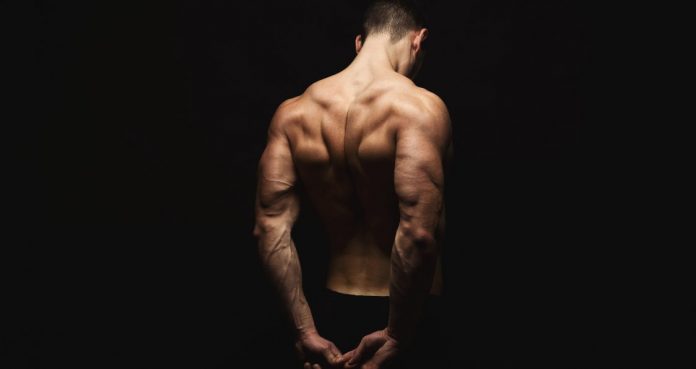
3 Quick Workouts To Get Rid Of Back Fat
The “other” spare tire
As horrible as spare tire syndrome is, there’s an epidemic that’s just as worst, it’s called back fat. That’s right, many men are focusing on their arms and chest and leaving their back out of the equation are doing themselves a strong disservice according to Simon King, personal trainer and owner of Cre8 Fitness gym in London.
“First, poor diet; eating whole foods that don’t inflame your body is a solid starting point,” Says King. “Second, neglecting the back muscles in training can sometimes be the cause since too many guys overtrain their chest and arms—the muscles they can see in the mirror—which can atrophy muscles in the back,”
King explains you always want to add compound movements into your workout. Exercises like the deadlift, squats, pull-ups, and pushups are all popular options.
“Third, a lack of high-intensity cardiovascular training can also be the pitfall since you need a multi-approached attack to really shift a stubborn fat storing area, and this form of training is really geared towards burning fat.”
While that advice is great in theory, what does a high intensity training workout really look like? We’re glad you asked. Below are 3 quick workout routines that will get rid of that stubborn back fat in no time.
Routine #1: The 200 Challenge
Directions: Complete 10 deadlifts followed by 10 push ups for 10 total rounds for time. Don’t pause for rest. “Once the 200 reps are completed, note your time and aim to beat that next go-around,” King says. Make sure you maintain safe and correct form throughout.
– Deadlifts x 10 (Beginners use 50% of body weight on bar; intermediate lifters use 75% of bodyweight; advanced lifters use 100% of bodyweight.)– Pushups x 10
Routine #2: The Hurt So Good
Perform the exercises as supersets keeping full range in your movements and a controlled tempo. Complete as many rounds as possible in 15 minutes, resting only as needed. Your score is determined by the total reps completed, so if you did 4 full rounds you have a score of 152 (38 reps x 4 rounds), get it?. Try to bet your previous score each workout.
1A. Front squat x 6 (75% of your bodyweight on the bar)1B. Pull ups x 62A. Back squat x 10 (75% of your bodyweight on the
Routine #3: The Finisher
Do as many reps of an exercise as possible in 45 seconds, rest 15 seconds, and then move on to the next movement. After you complete Exercise 4, rest 1 minute. That’s 1 round. Do a total of 6 rounds—for a 30-minute workout that’ll bust stubborn fat for good.
Exercise 1. Pushup-position rowExercise 2. Skier swingExercise 3. Lateral squat switchesExercise 4. Clean to push press.
Wrap Up
There you go, three workouts all under 30 minutes that will get you shredded and make back fat a thing of the past. While there is no “quick trick” to cutting fat – having a more detailed direction can do wonders towards making more efficient progress.
As noted at the top, a poor diet is the first and most obvious factor in weight gain and problems cutting fat. While focused training can help burn calories – it’s ultimately what you do in the kitchen that will have the greatest impact. Use these training tips as an additional tool – not the only factor – for cutting down fat for good.
*Header image courtesy of Envato Elements.
